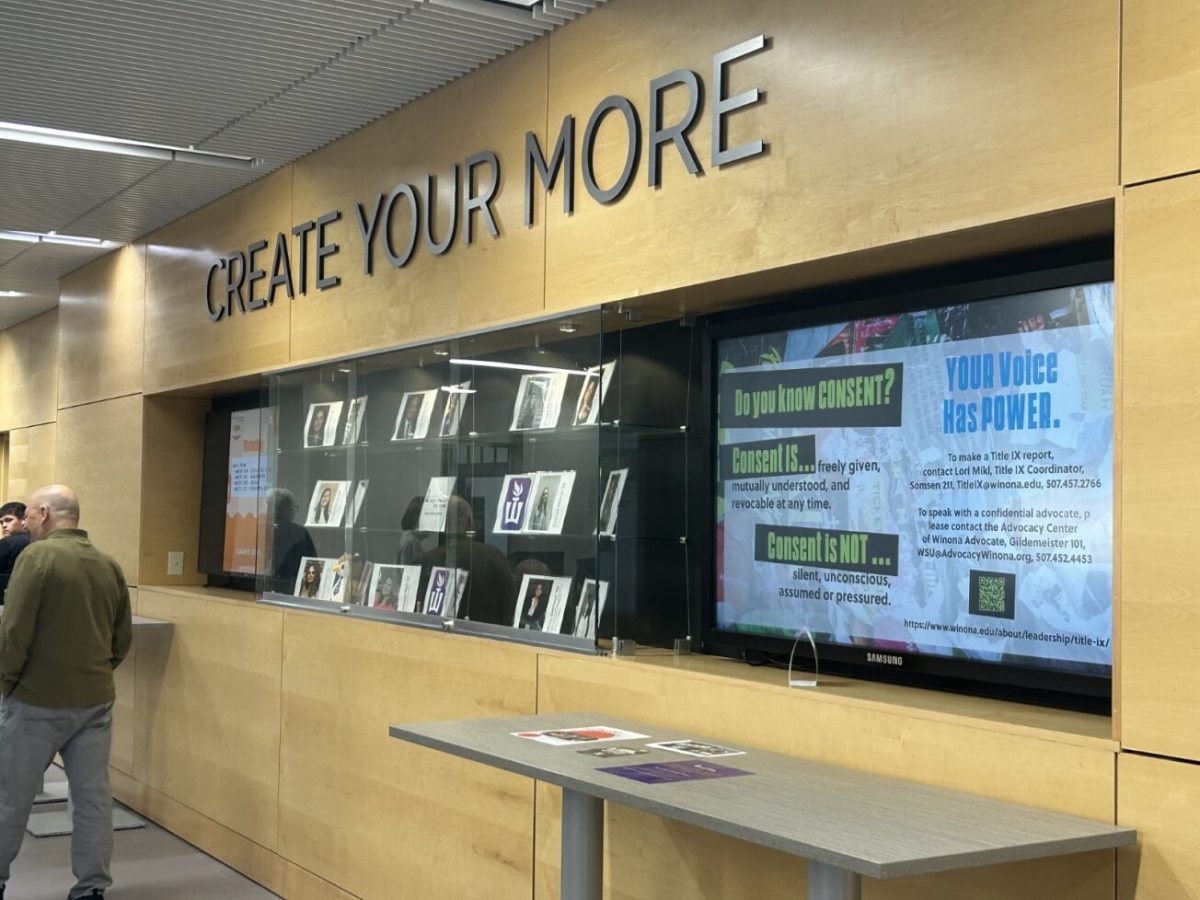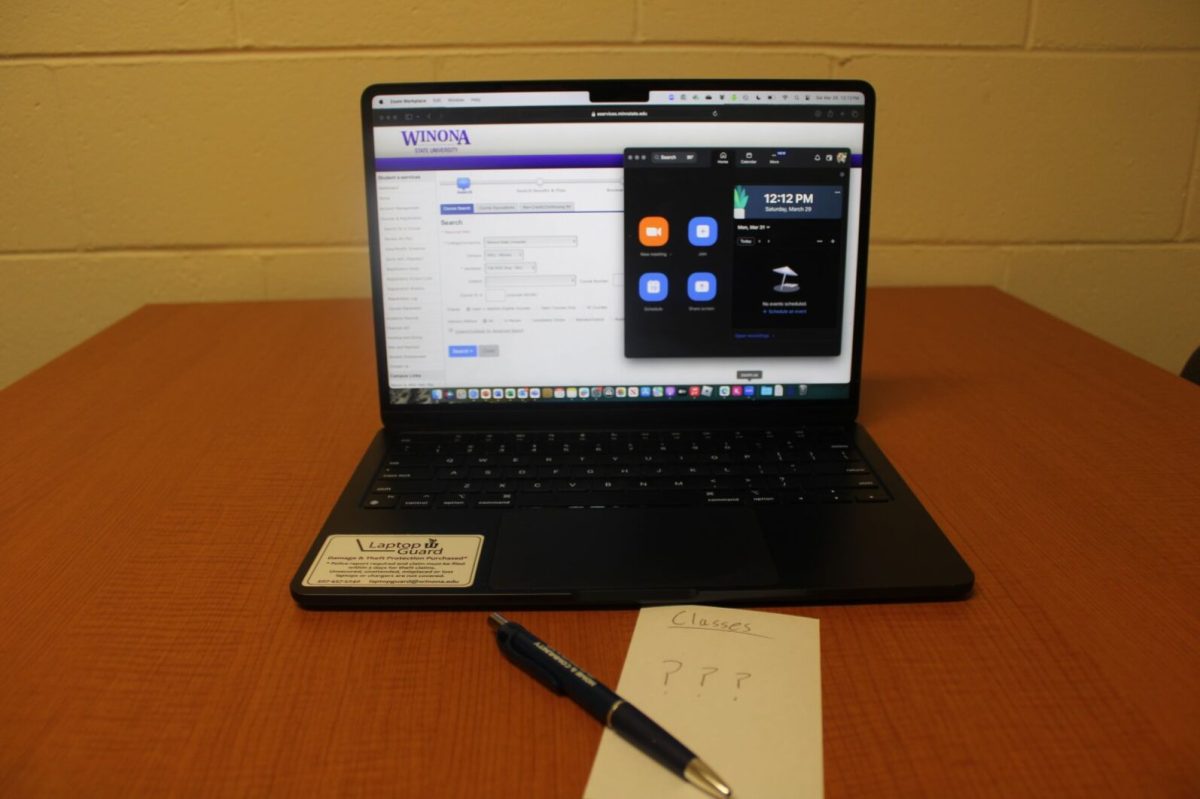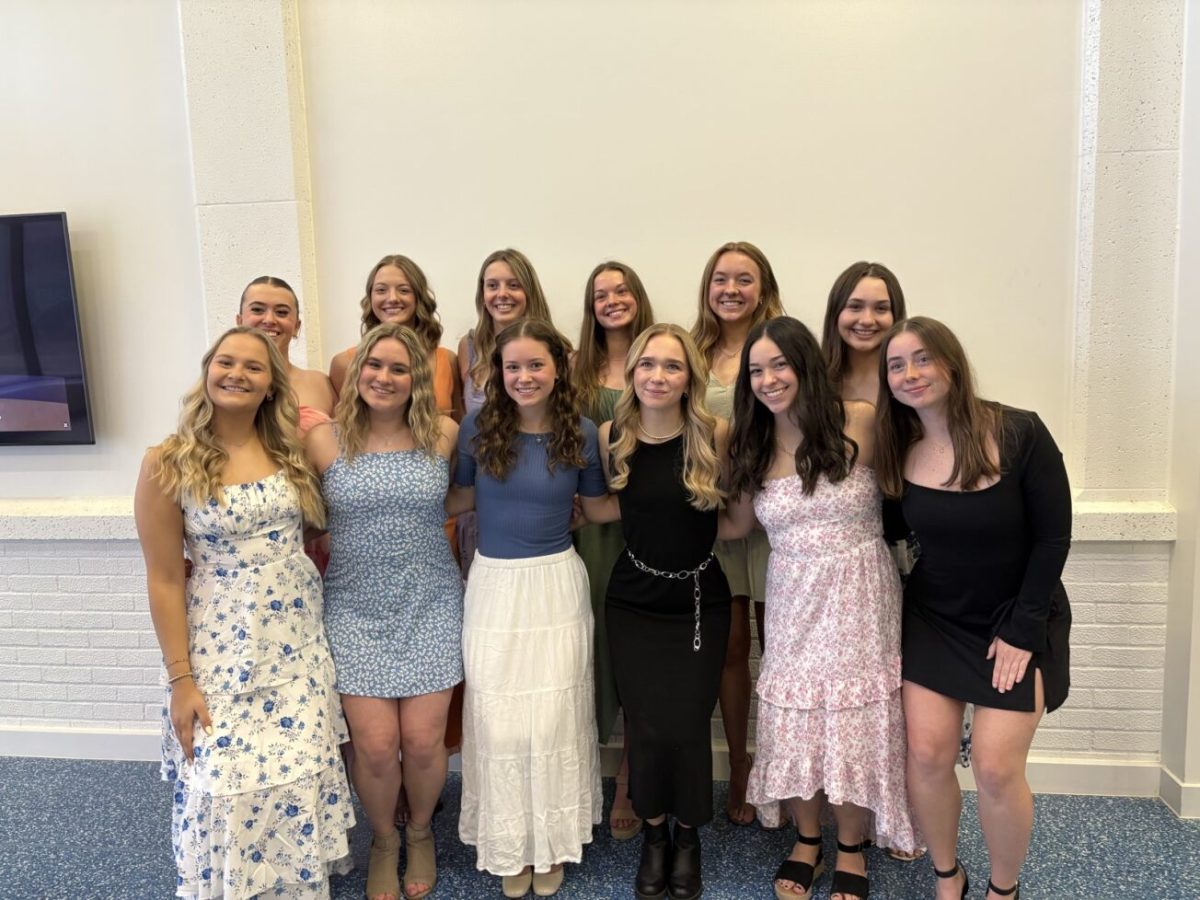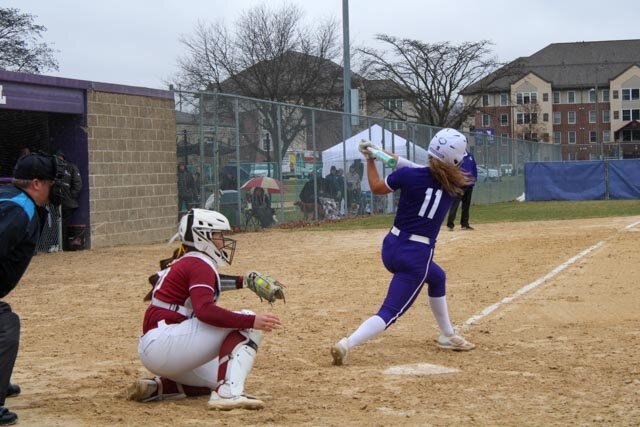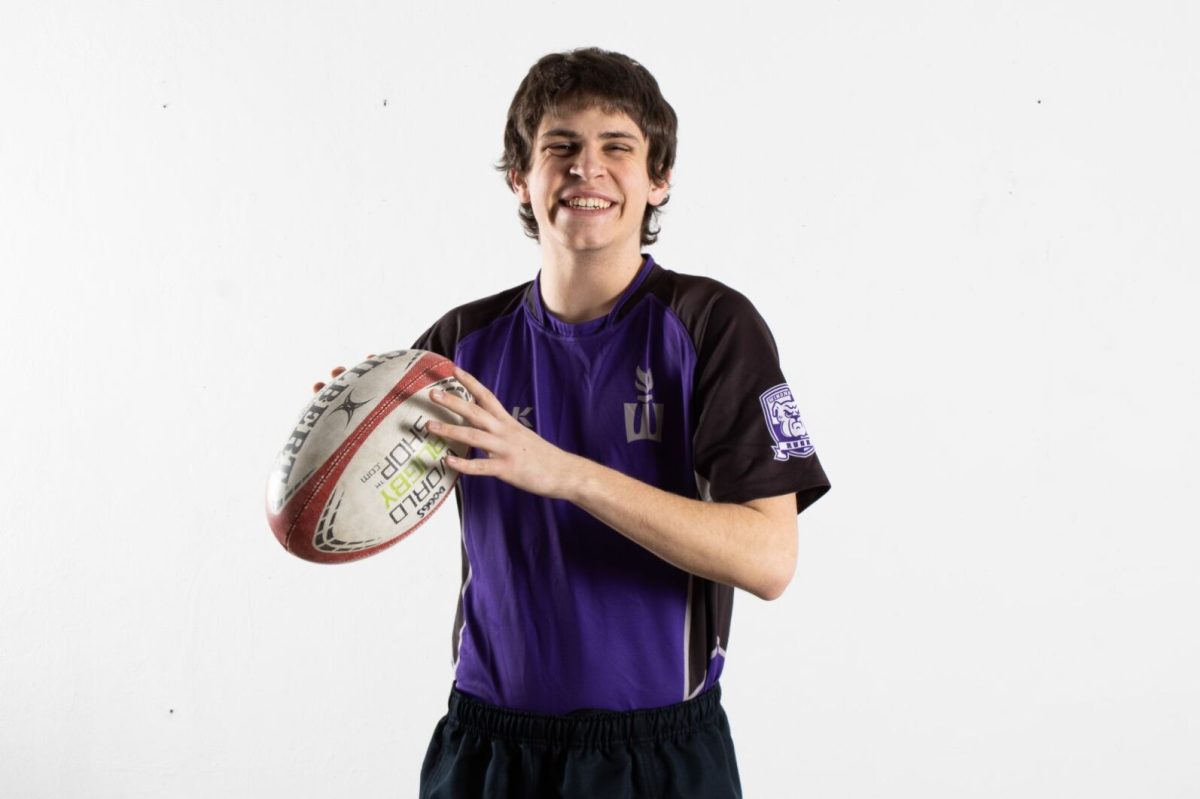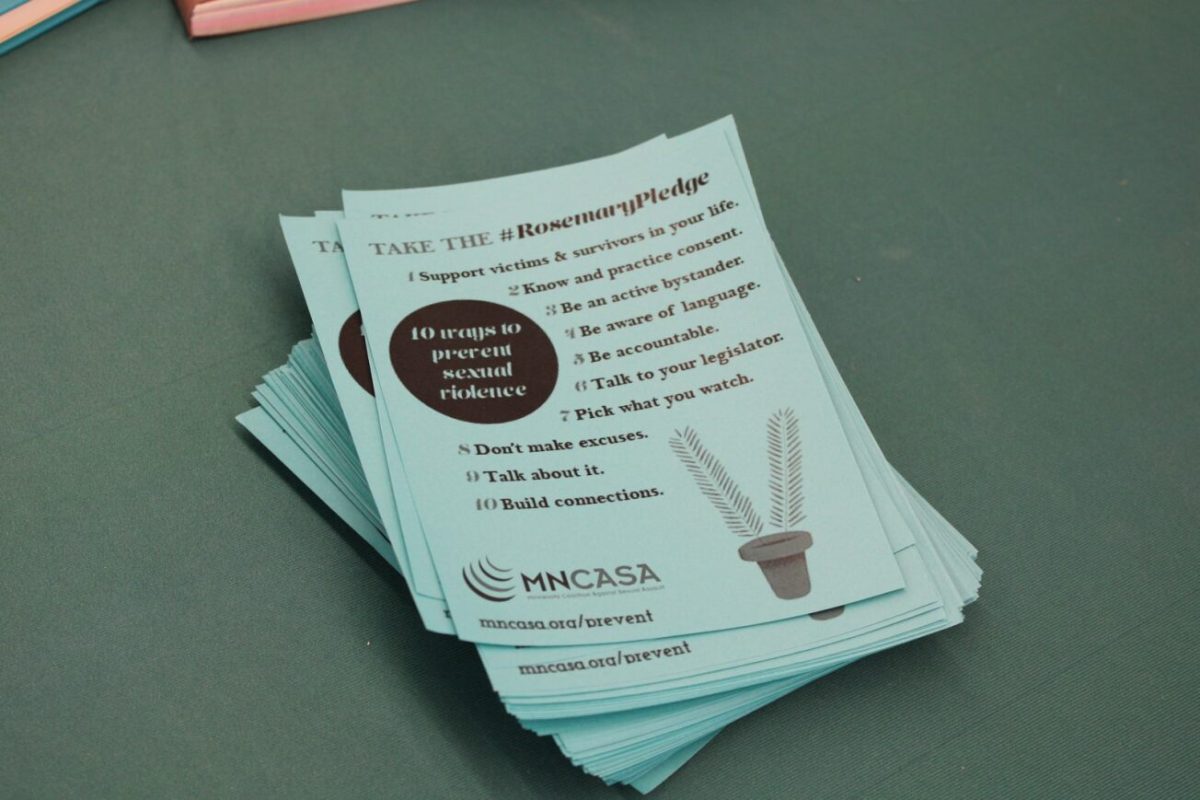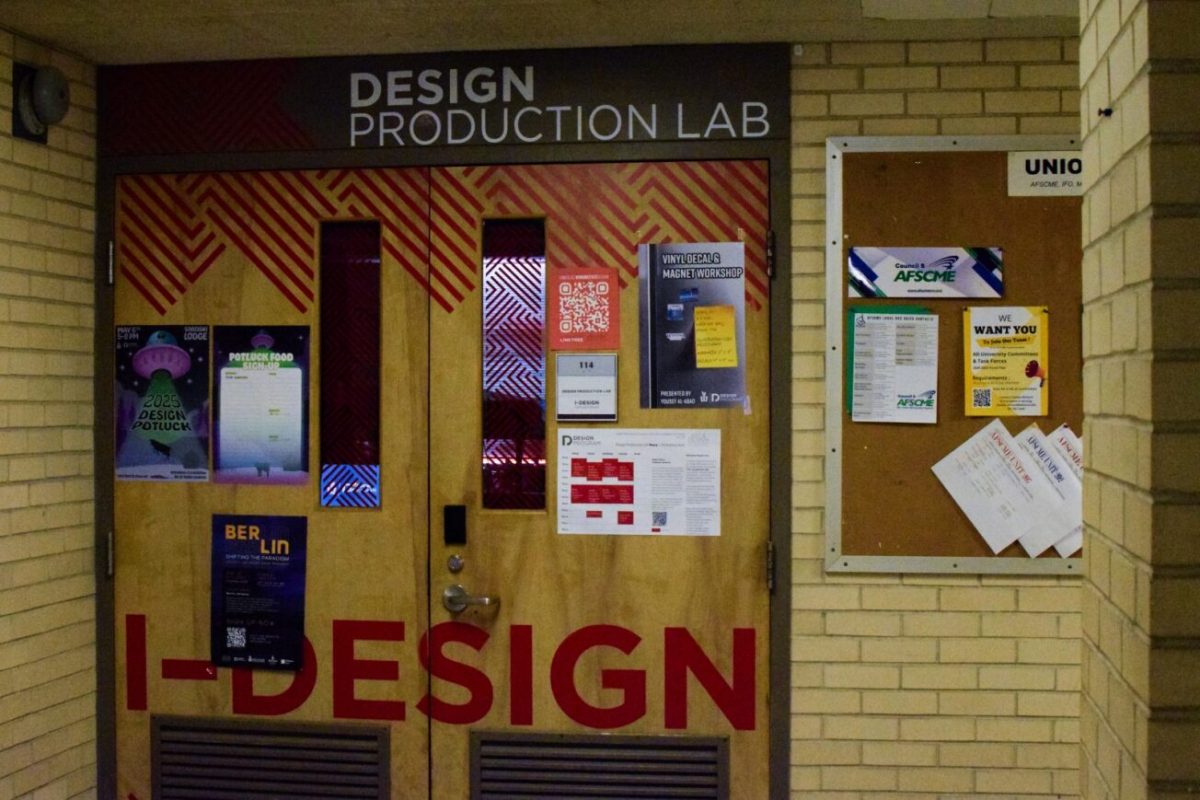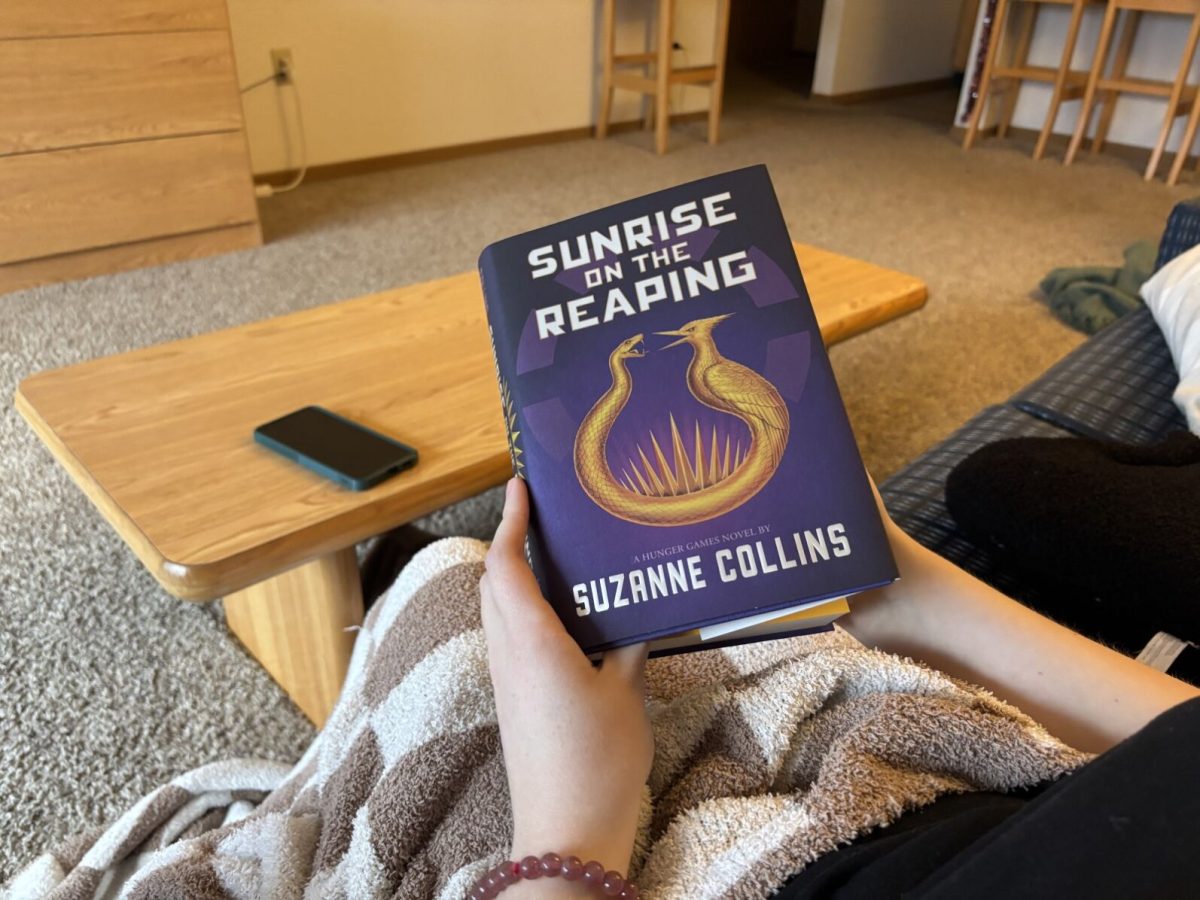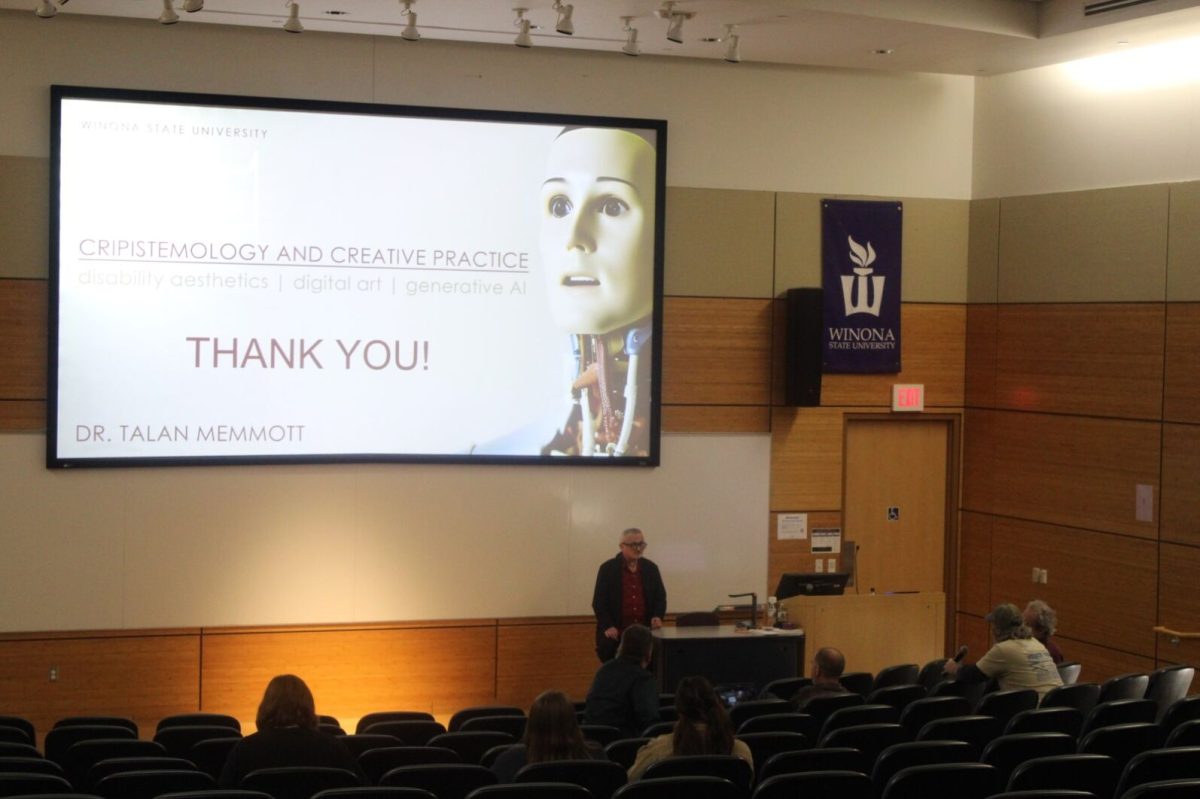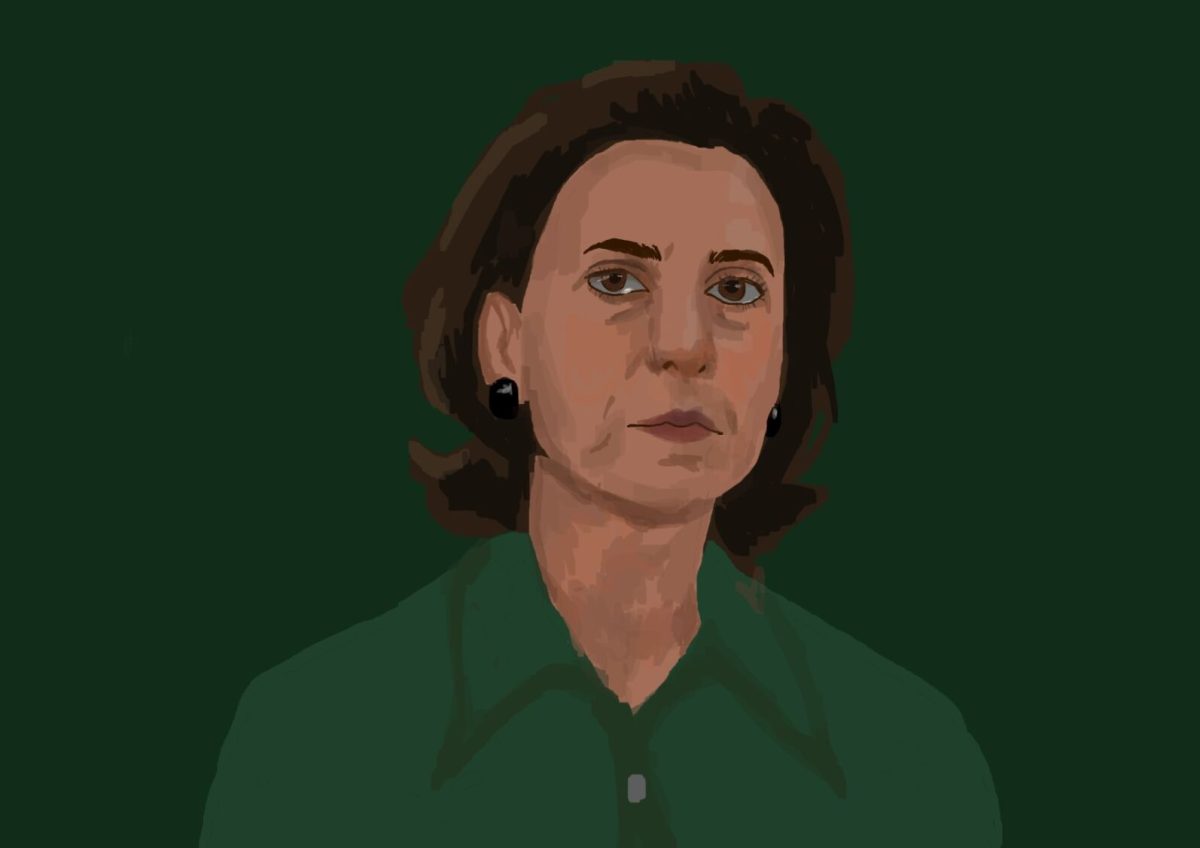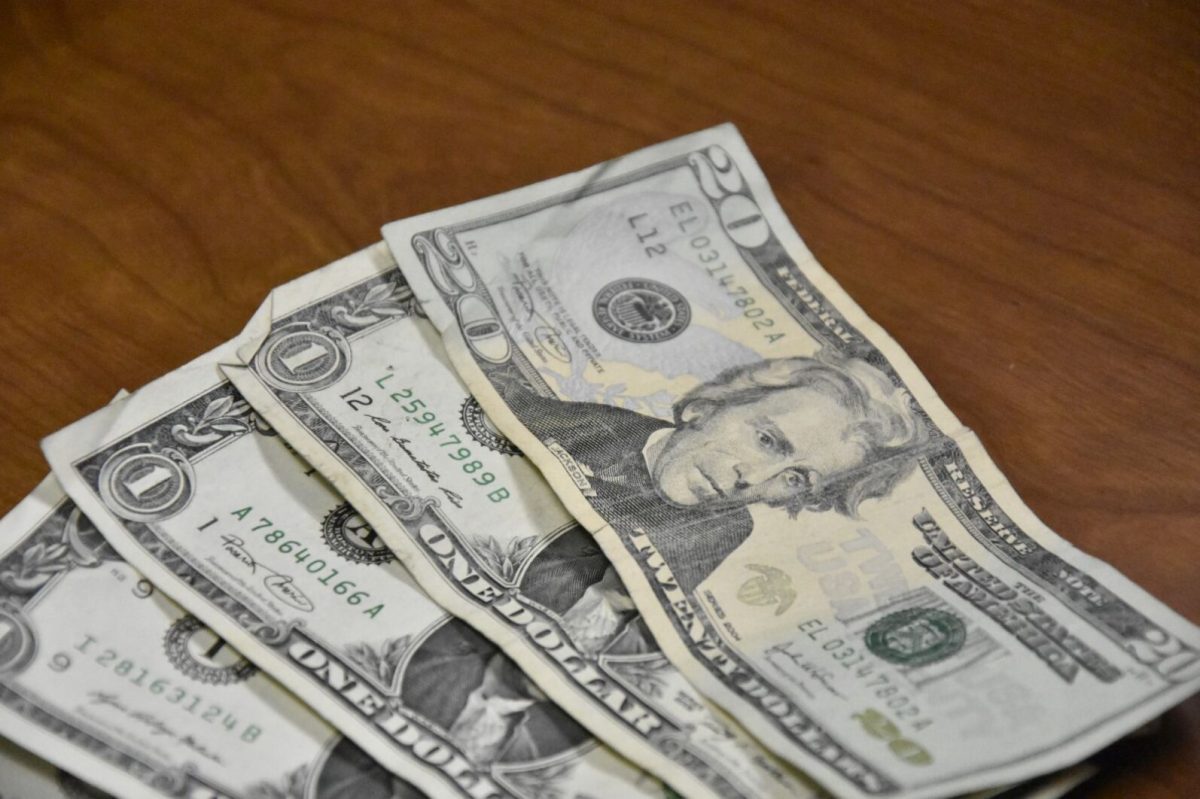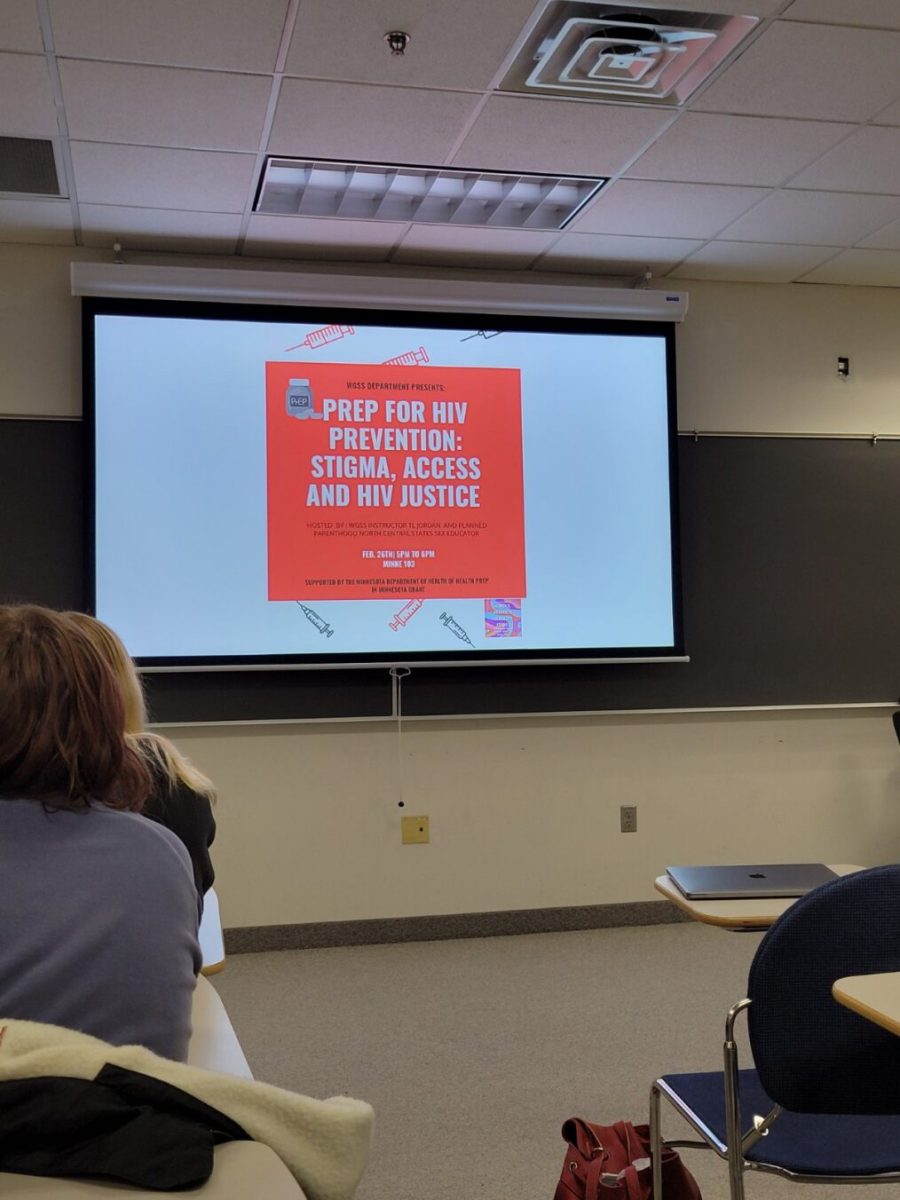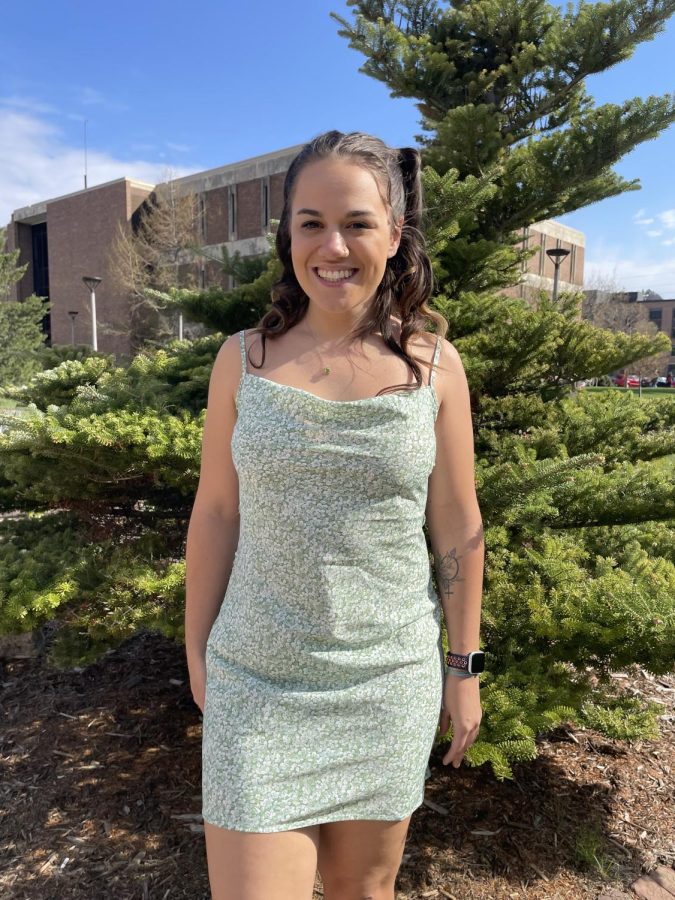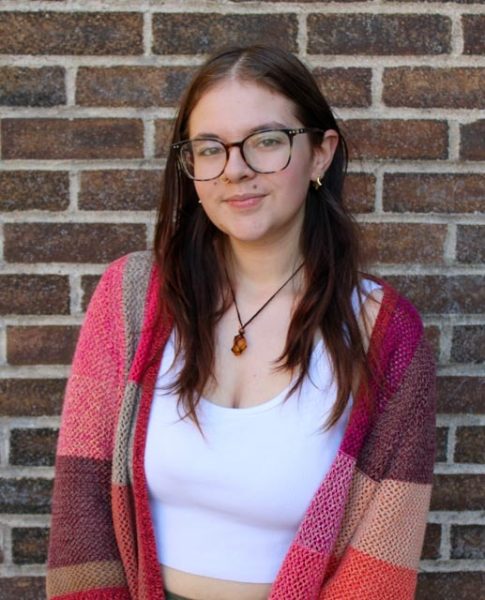My first exposure to the Somsen Hall mural occurred when I was a child. I remember walking through the entrance of Somsen Hall and being shocked at the imagery plastered across its walls. Growing up in the Winona area, I was not exposed to much Native representation outside of “Princess Winona,” so being exposed to such graphic, traumatizing imagery as a young Indigenous child was a jarring experience to say the least.
The Somsen Hall mural was installed in 1938 by John Socha, an artist funded by the New Deal Federal Art Project. The mural depicts images of a topless “Princess Winona” and a dead Native woman. The mural has been widely acknowledged as deeply offensive to the Native peoples of this area. In “Somsen Hall Mural Context: The Founding of Winona and the Somsen Hall WPA Mural” Winona State University itself acknowledged that “the mural imagery is historically inaccurate and deeply hurtful to Indigenous peoples” prompting the covering of it in 2020. The mural perpetuates harmful stereotypes and fosters a hostile environment to Native students.
As a student at Winona State now, I have continuously been harmed by this mural. I have been sent images of it without my consent and think about its presence every time I walk on to campus. This mural is not reflective of Winona State’s missions and commitments to equity and inclusivity, it is very exclusive to the Native population. Winona State is an institution of higher education and therefore a product of settler colonialism. This means the university must prioritize its Native students and listen to their concerns.
As students at Winona State, we can use our voices to invoke change. I urge other students to speak up about this issue. Join the Turtle Island Student Organization in calling for the mural’s removal and an investment in Native art.


